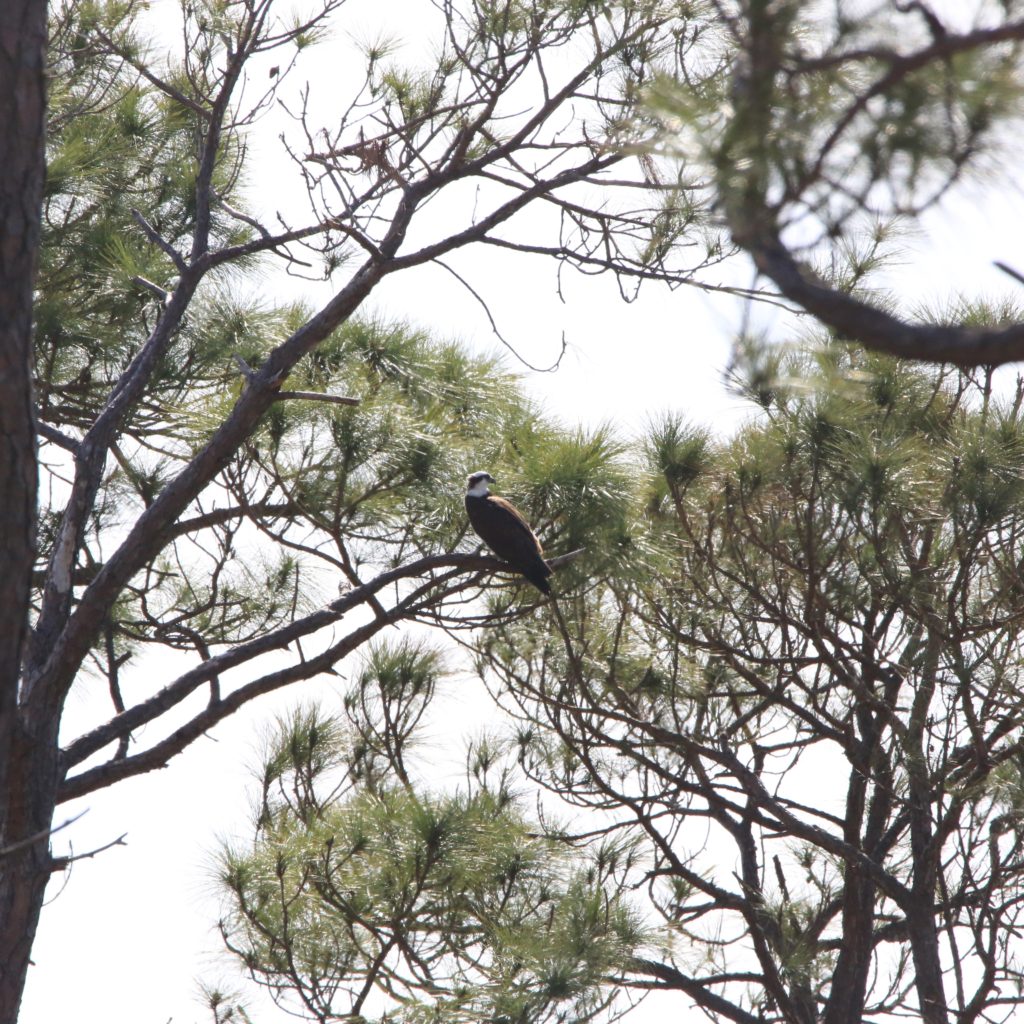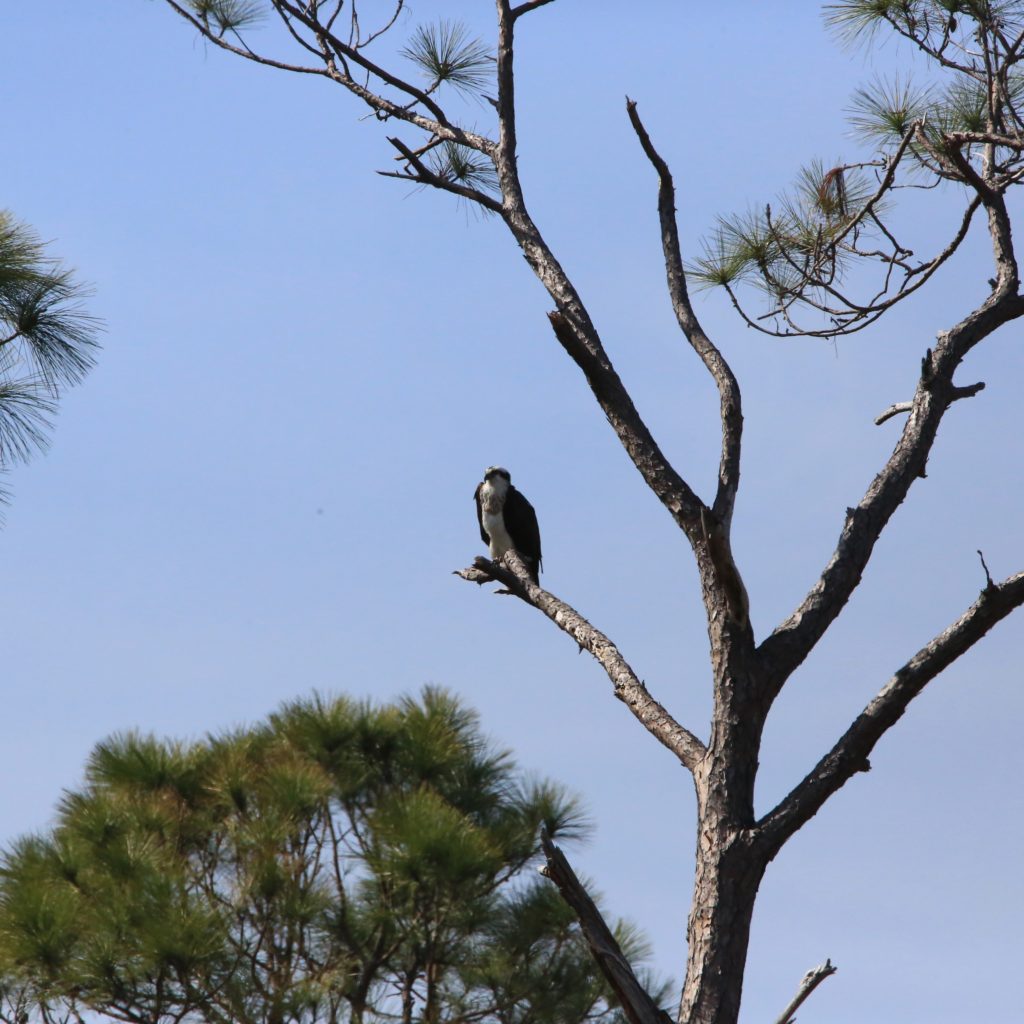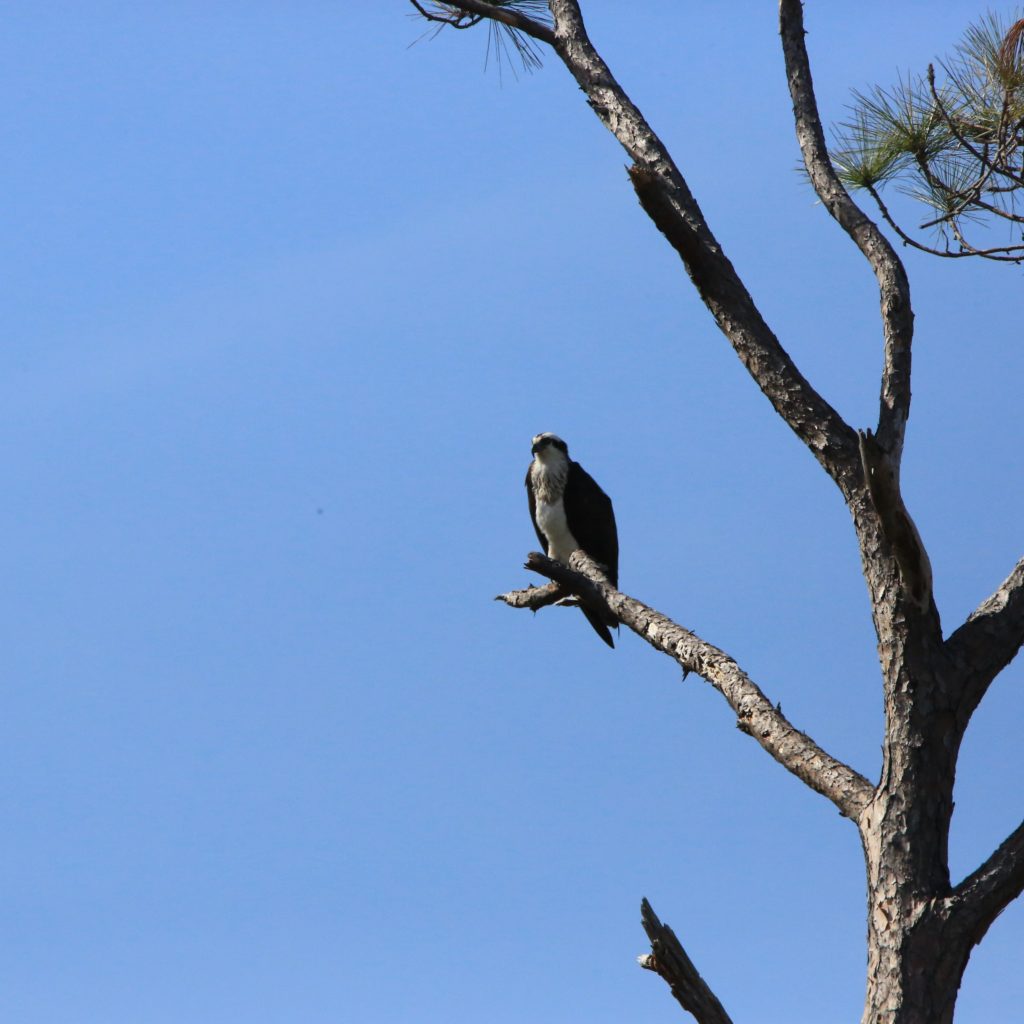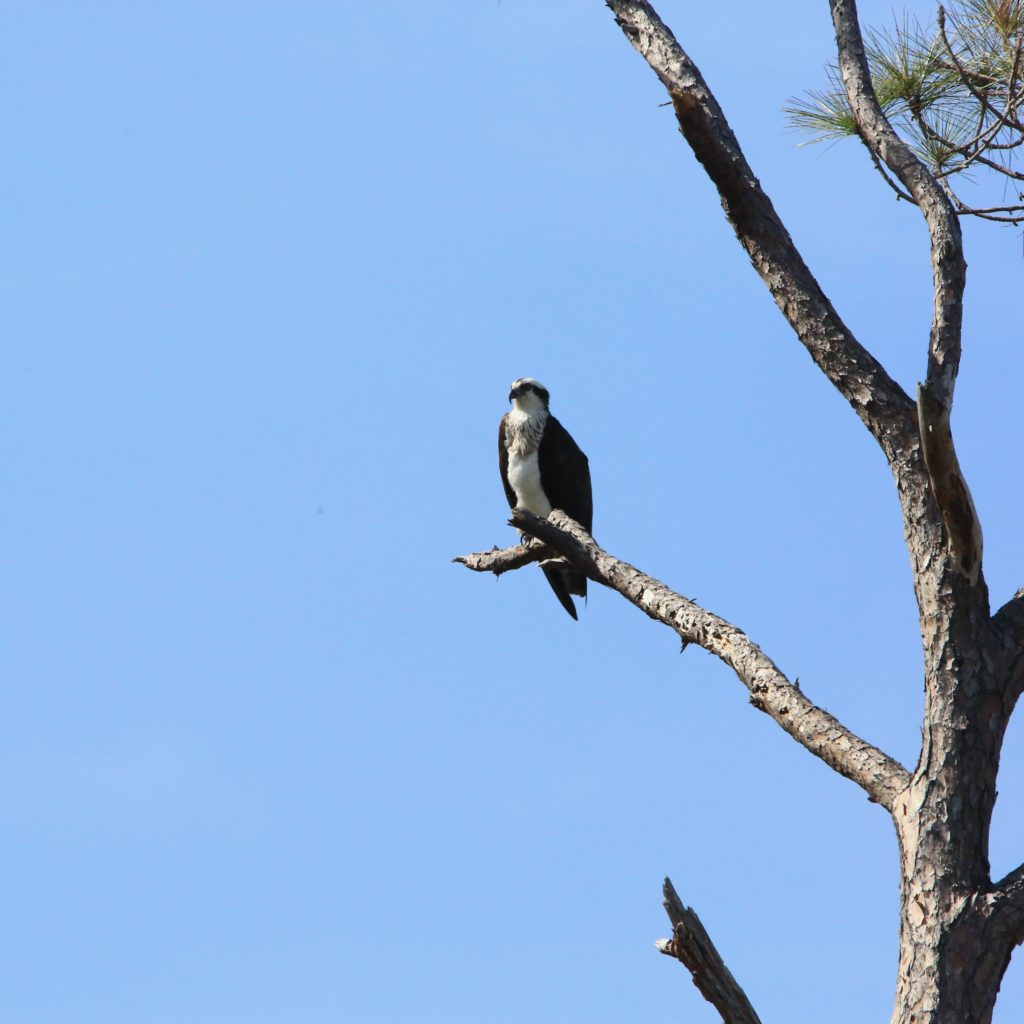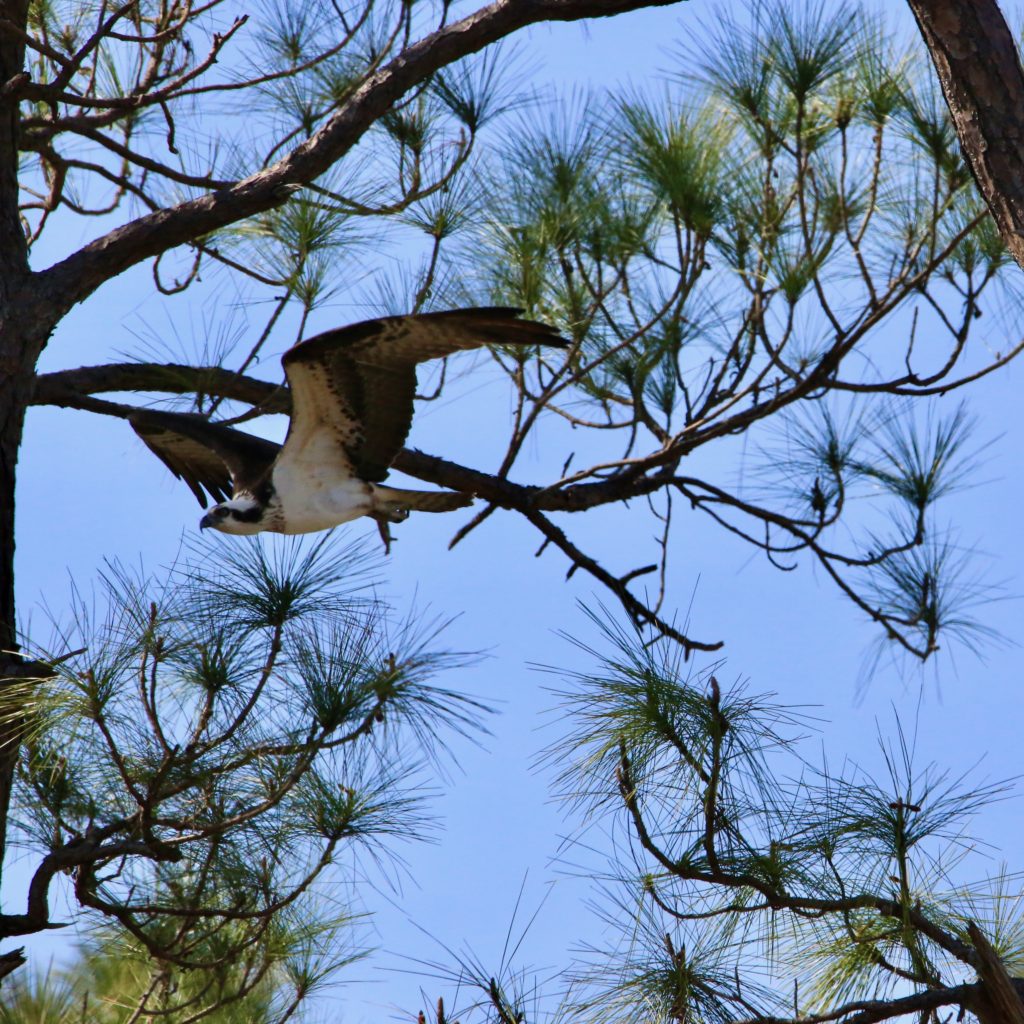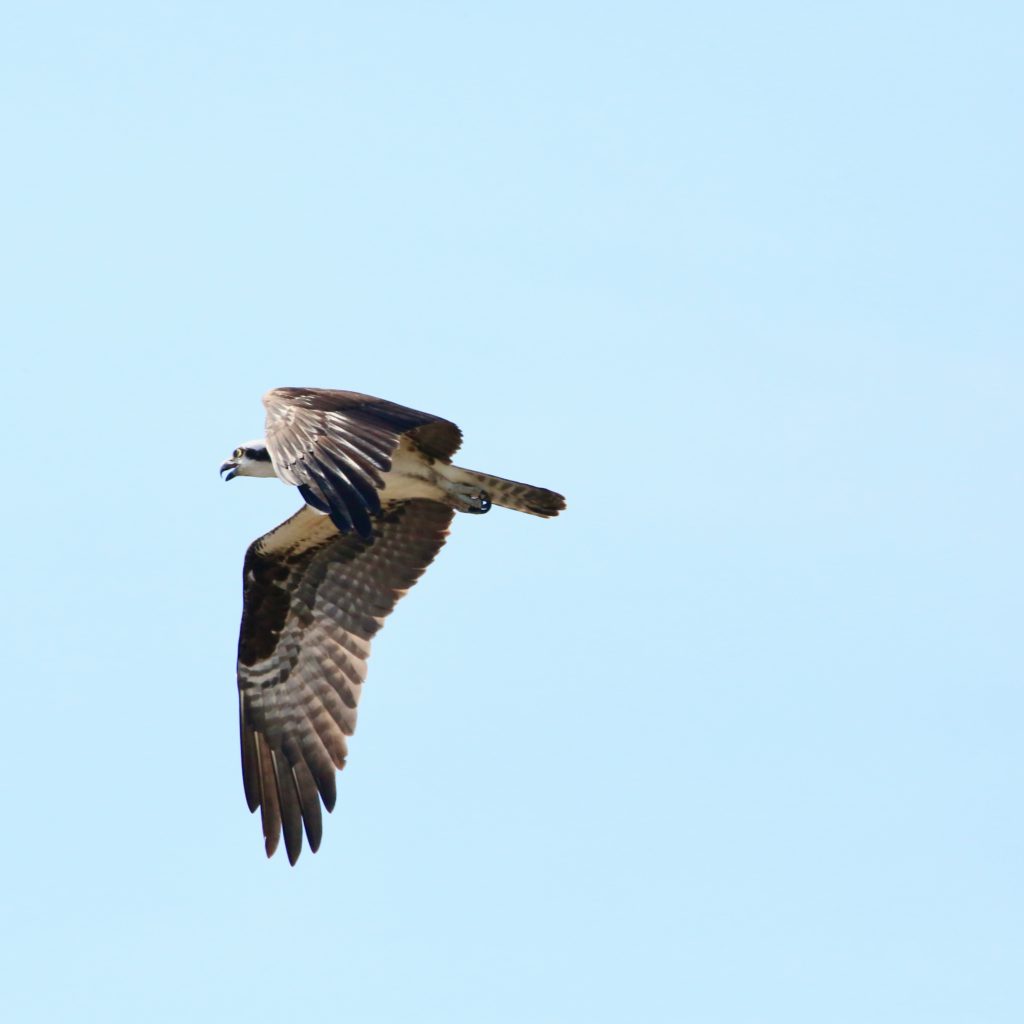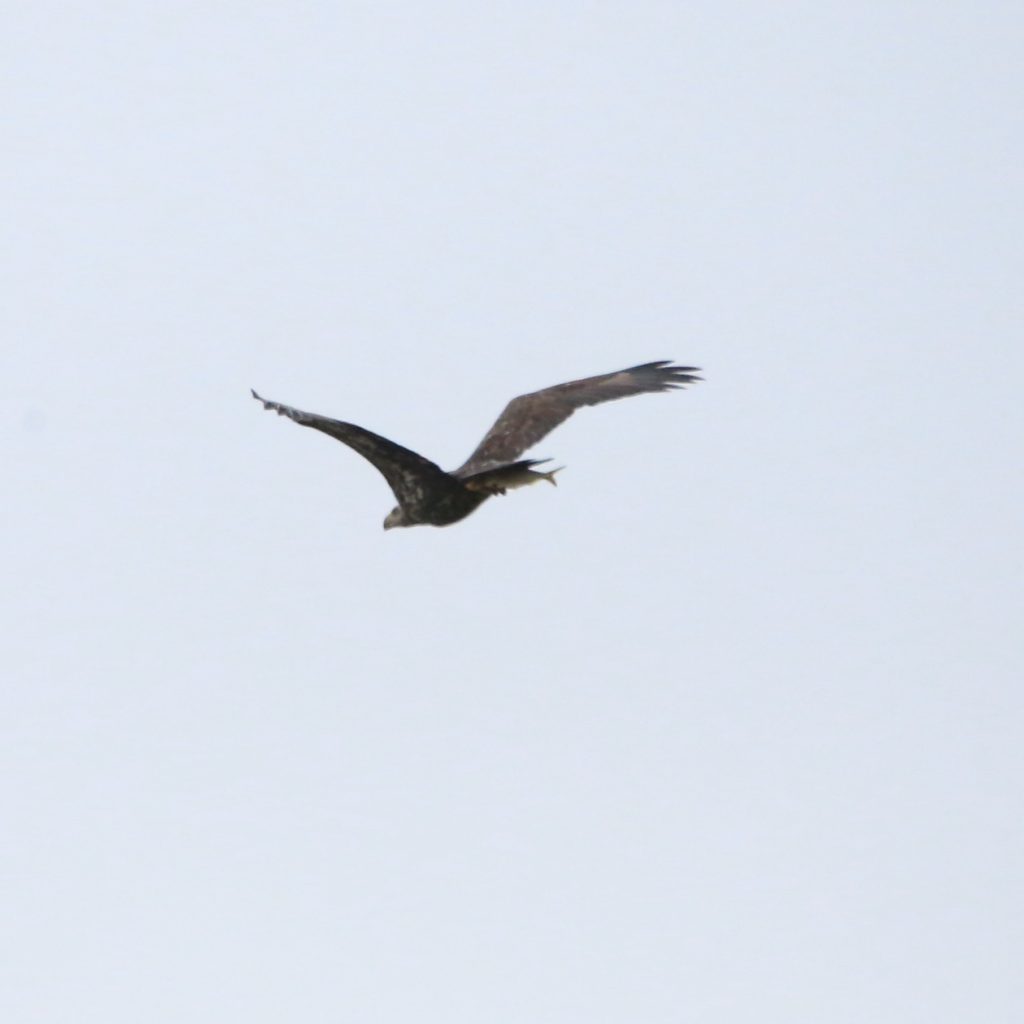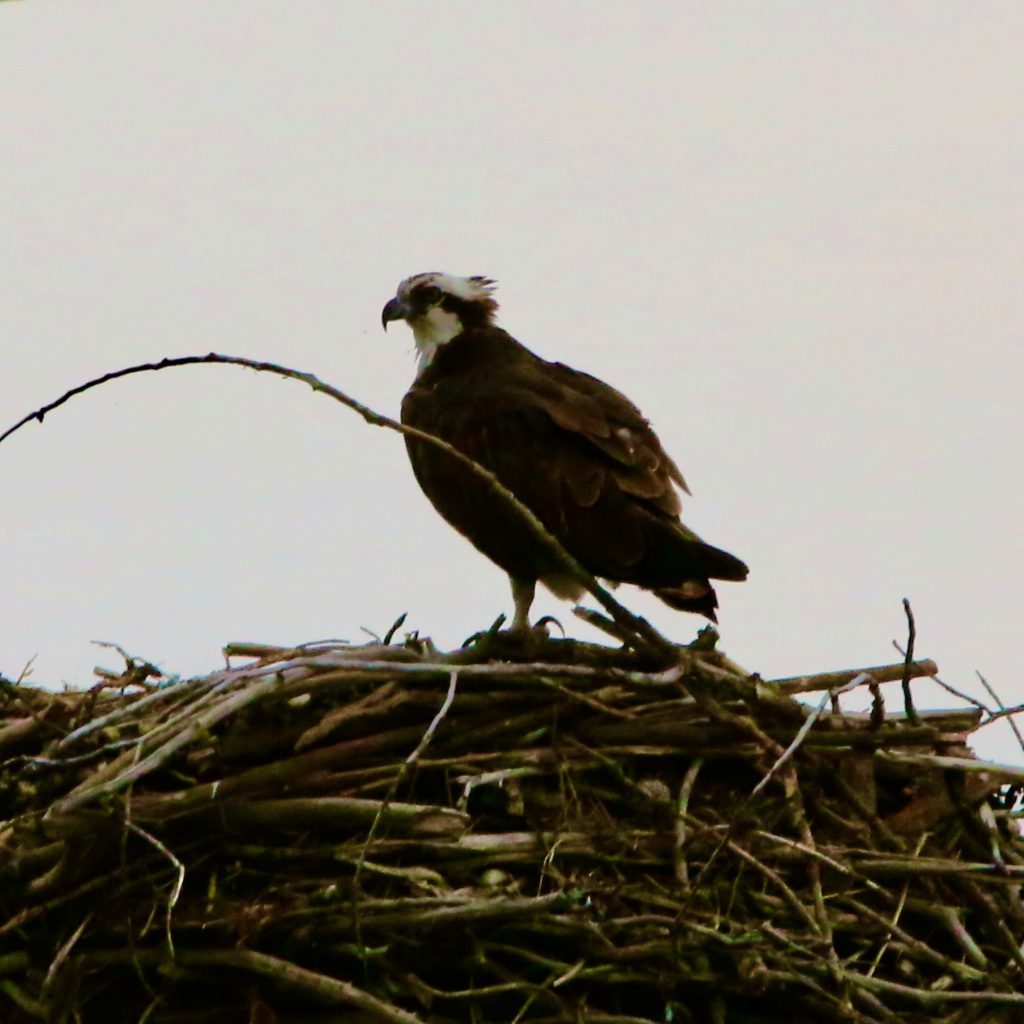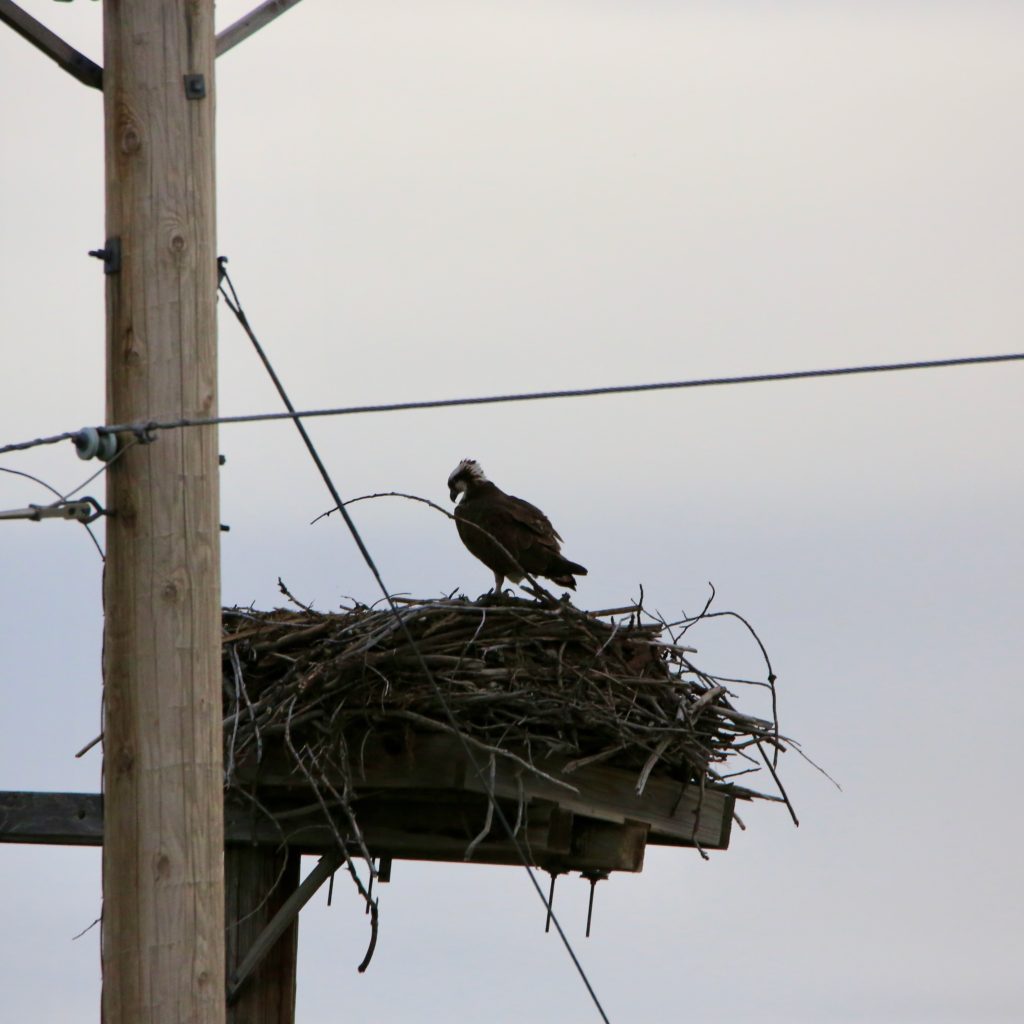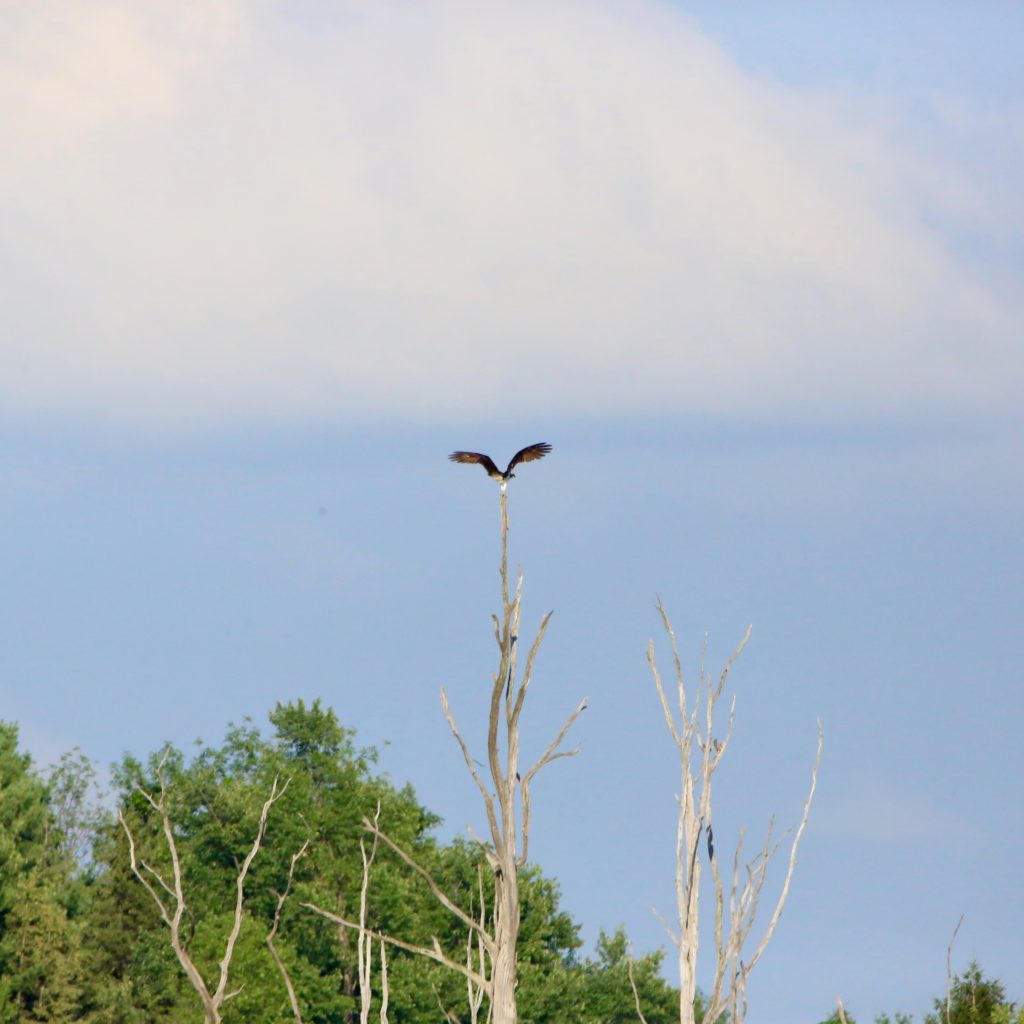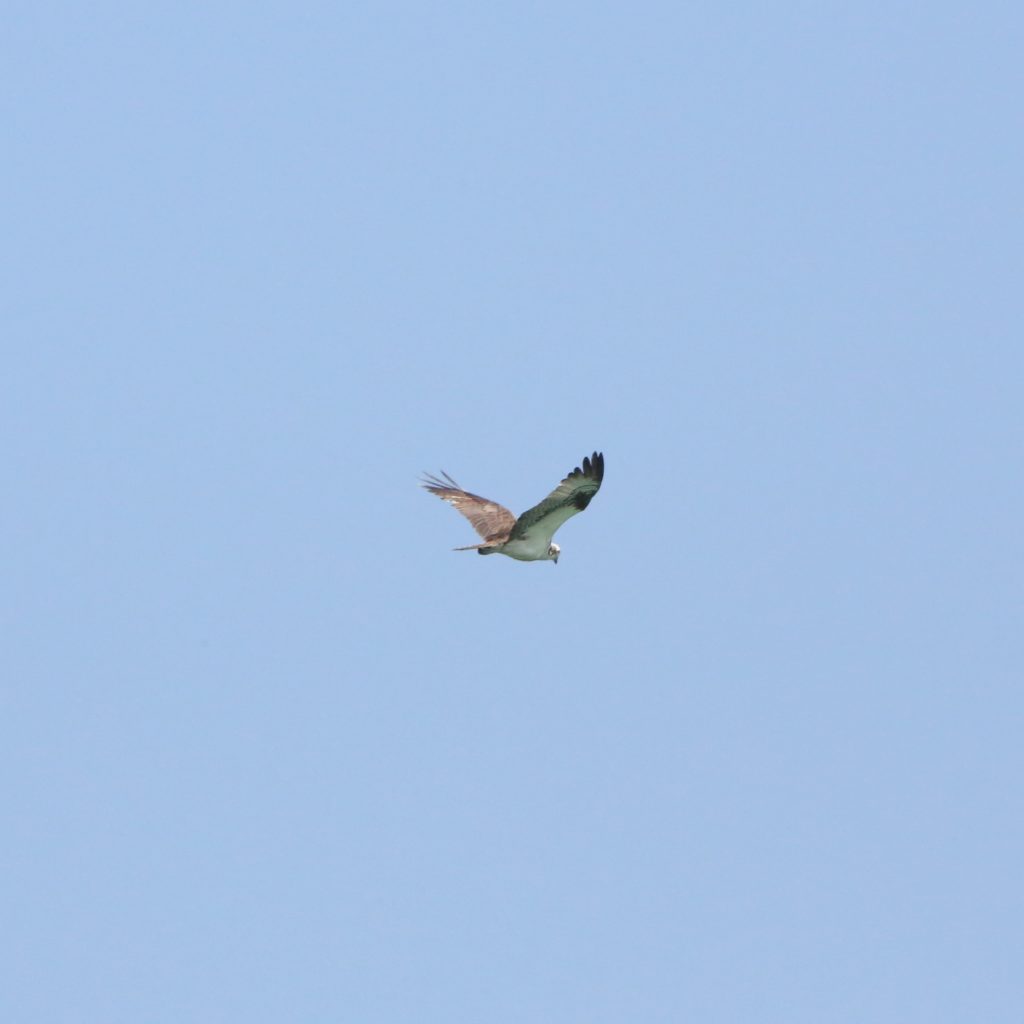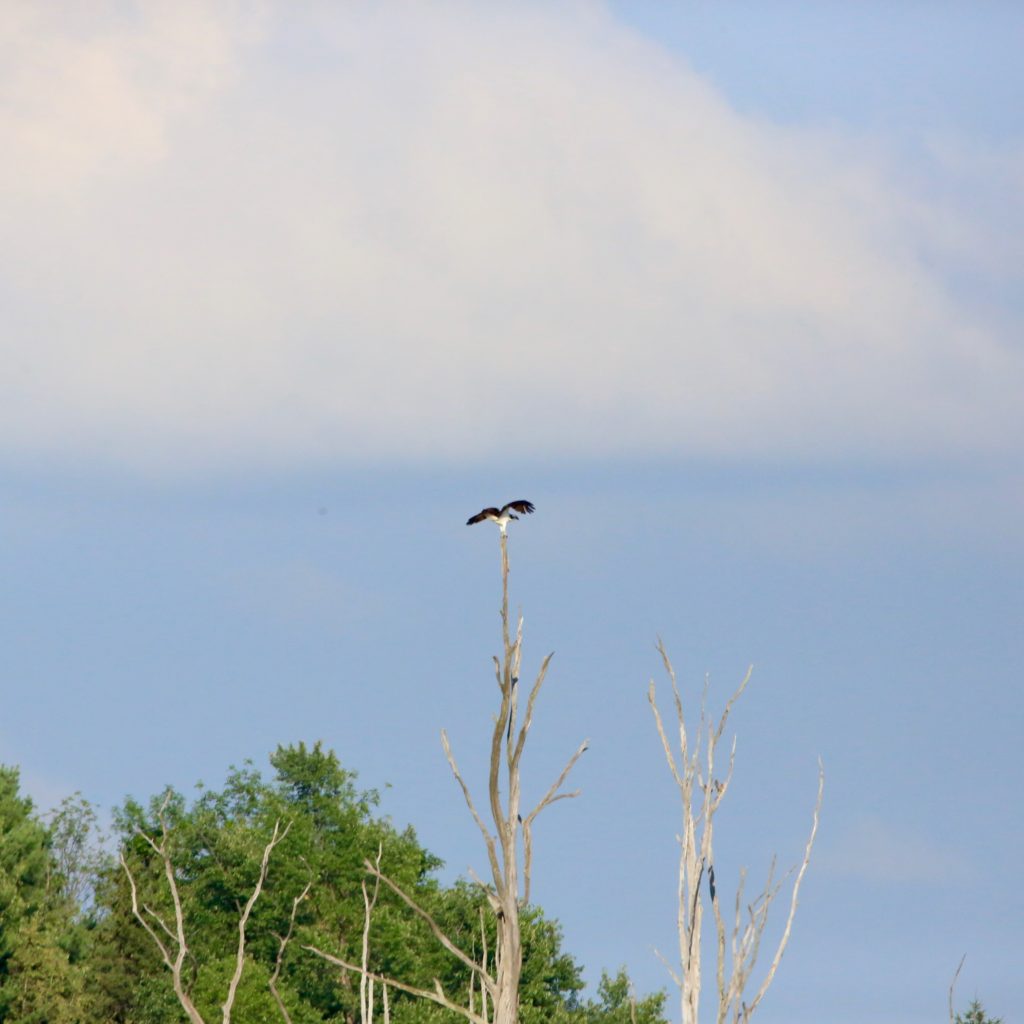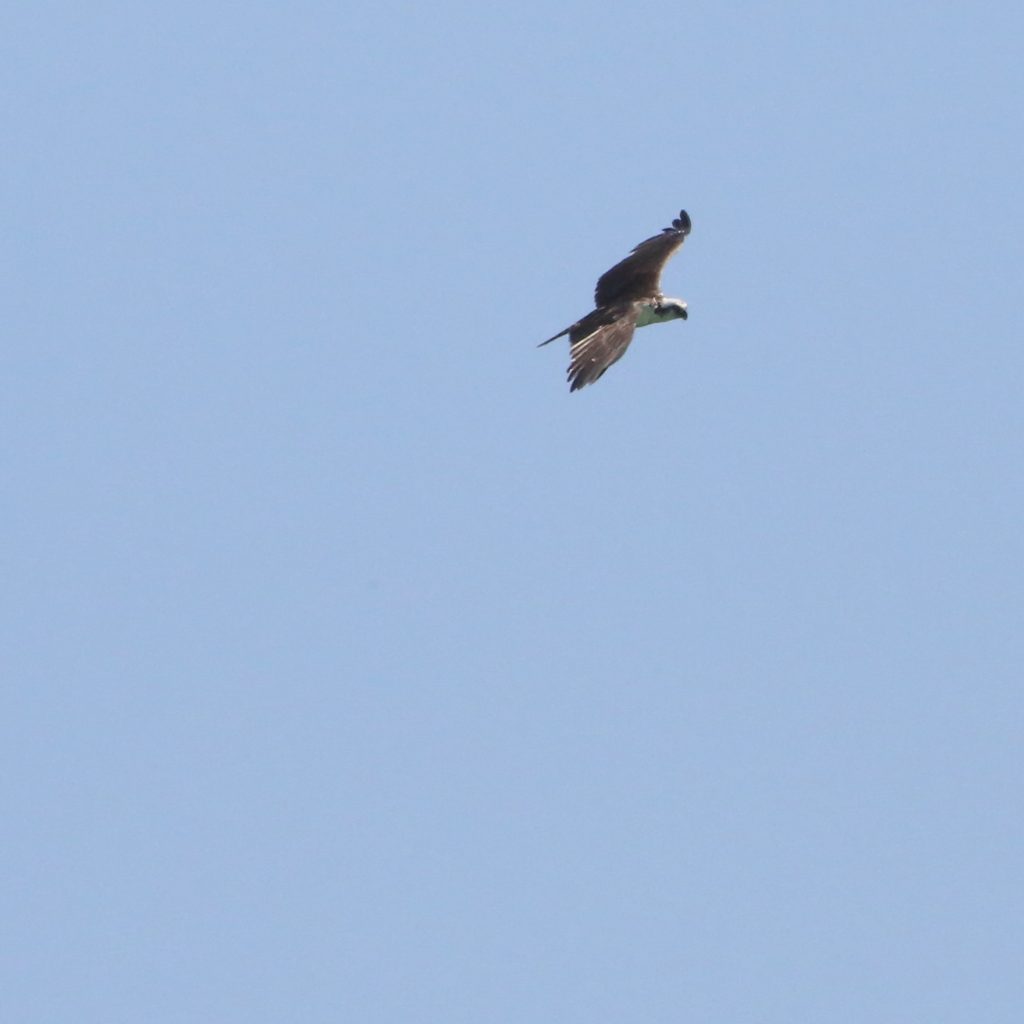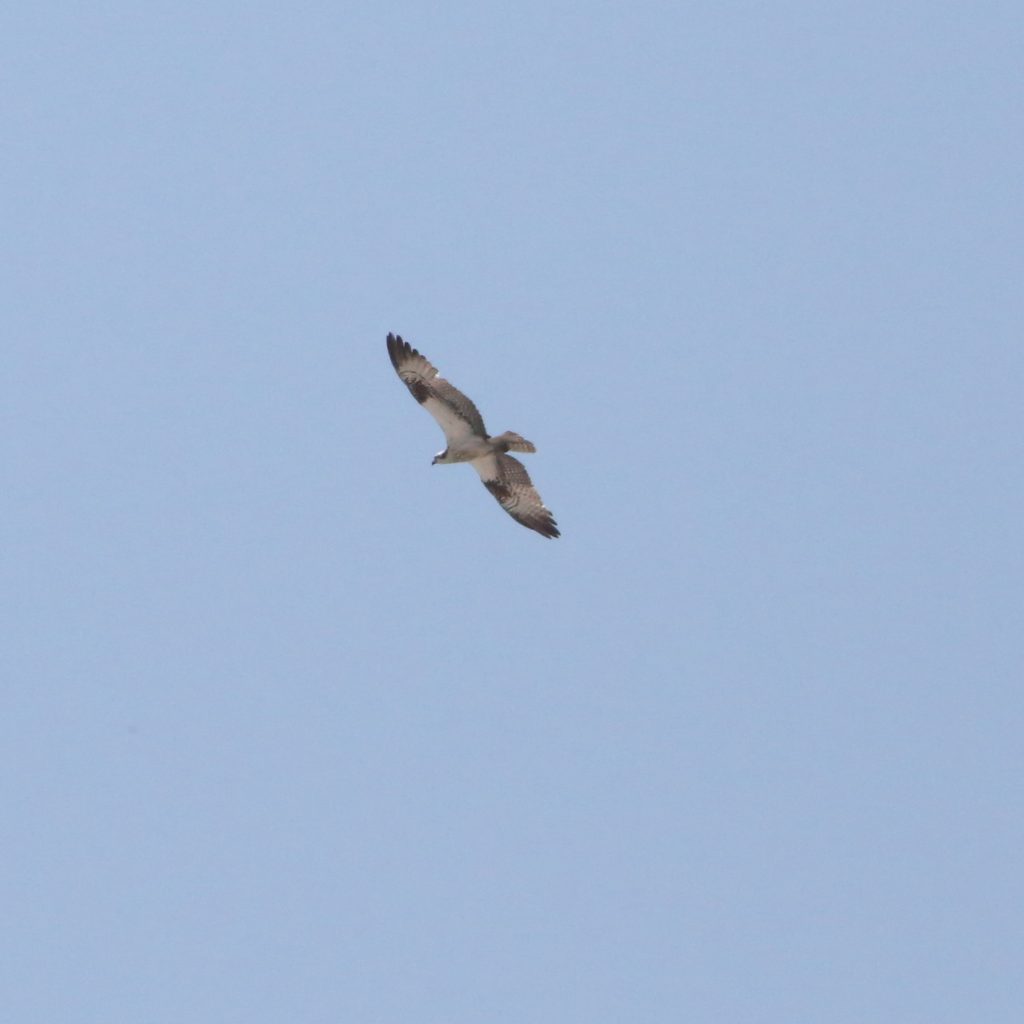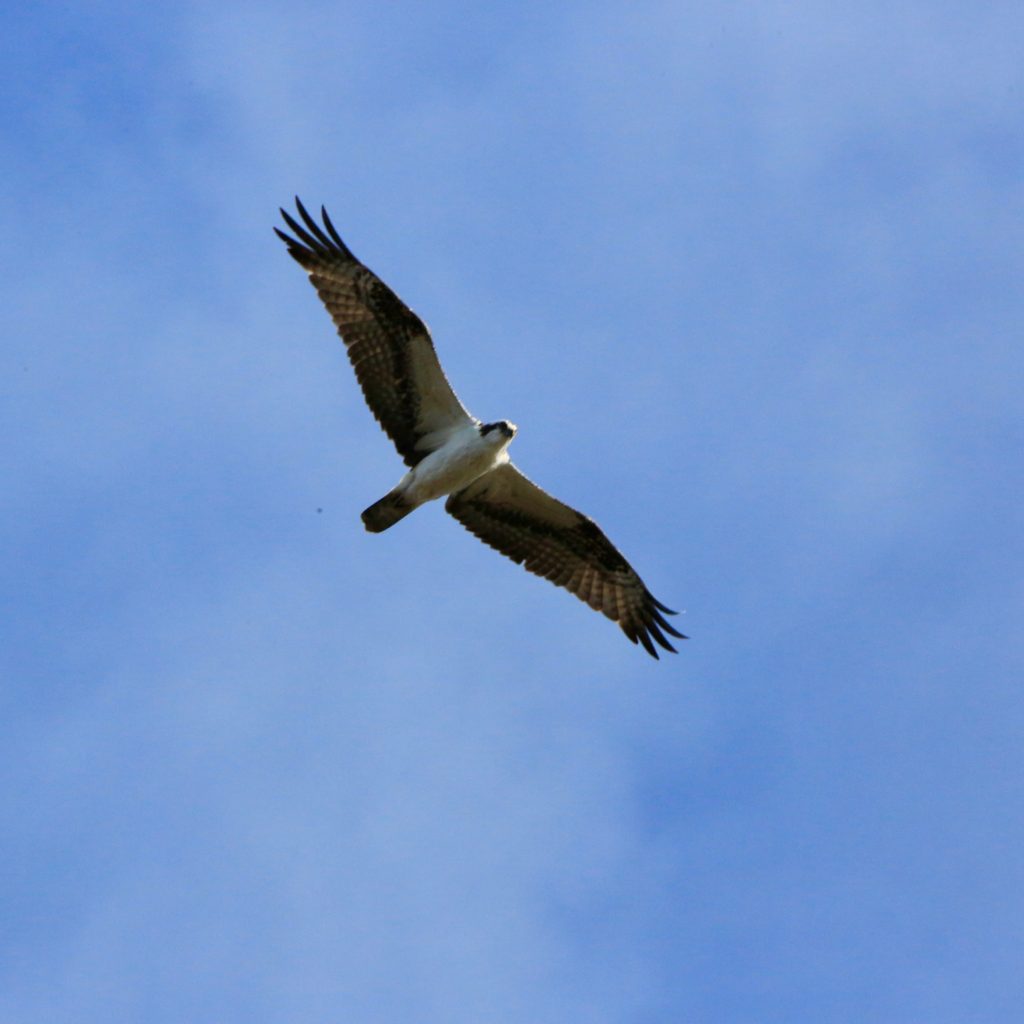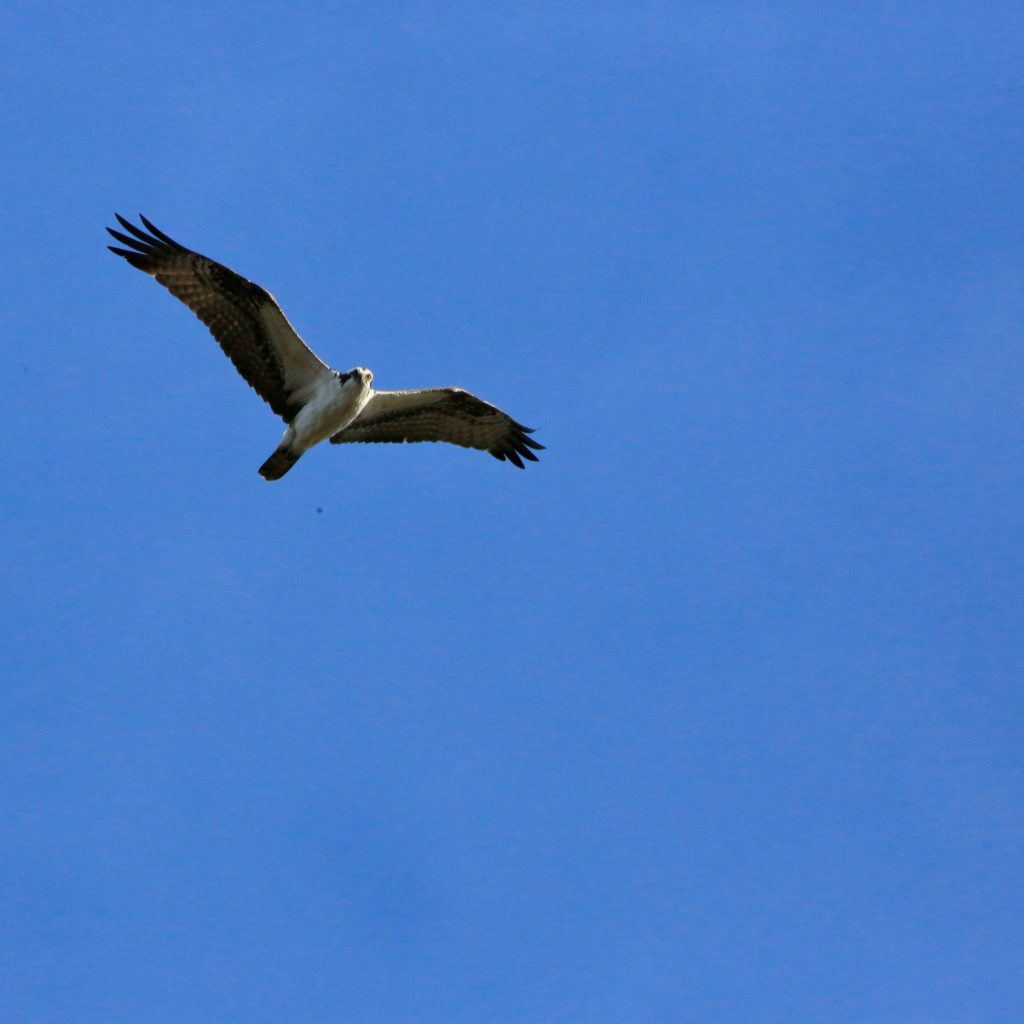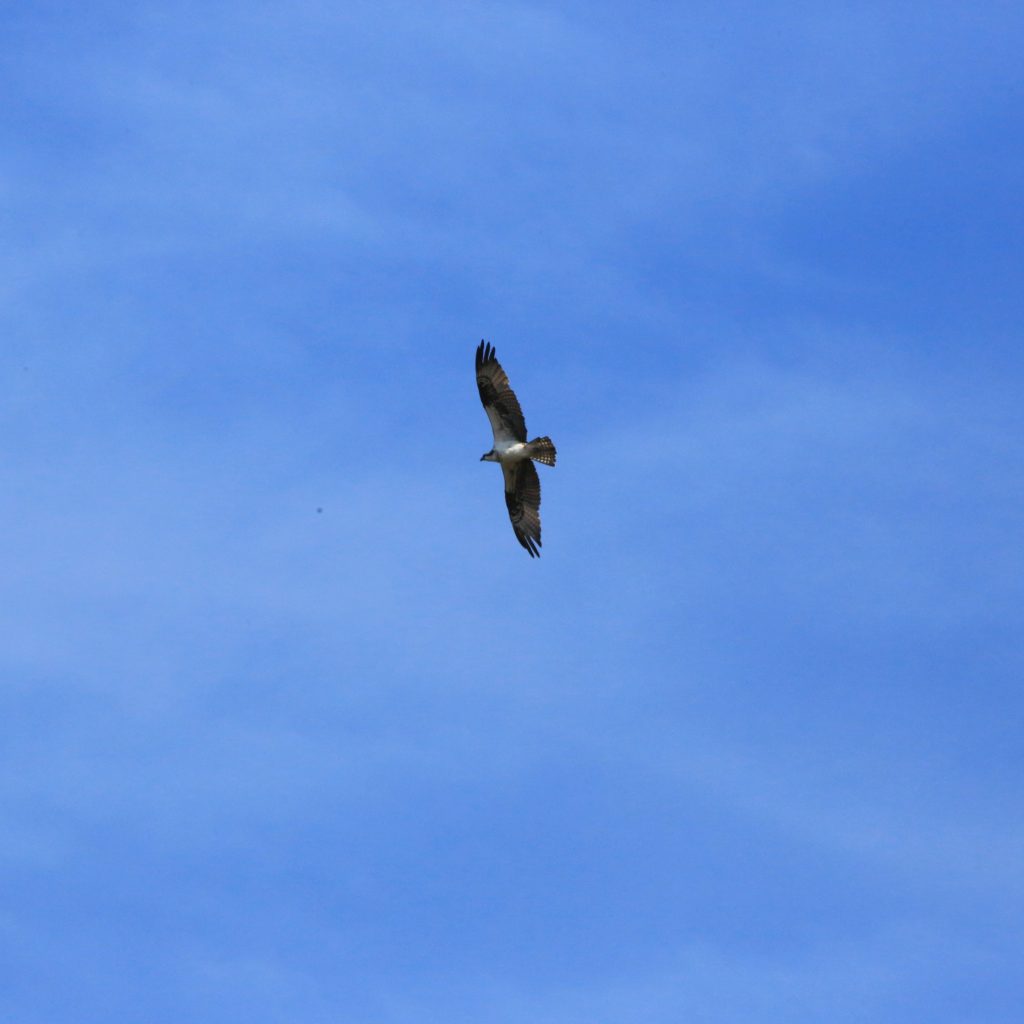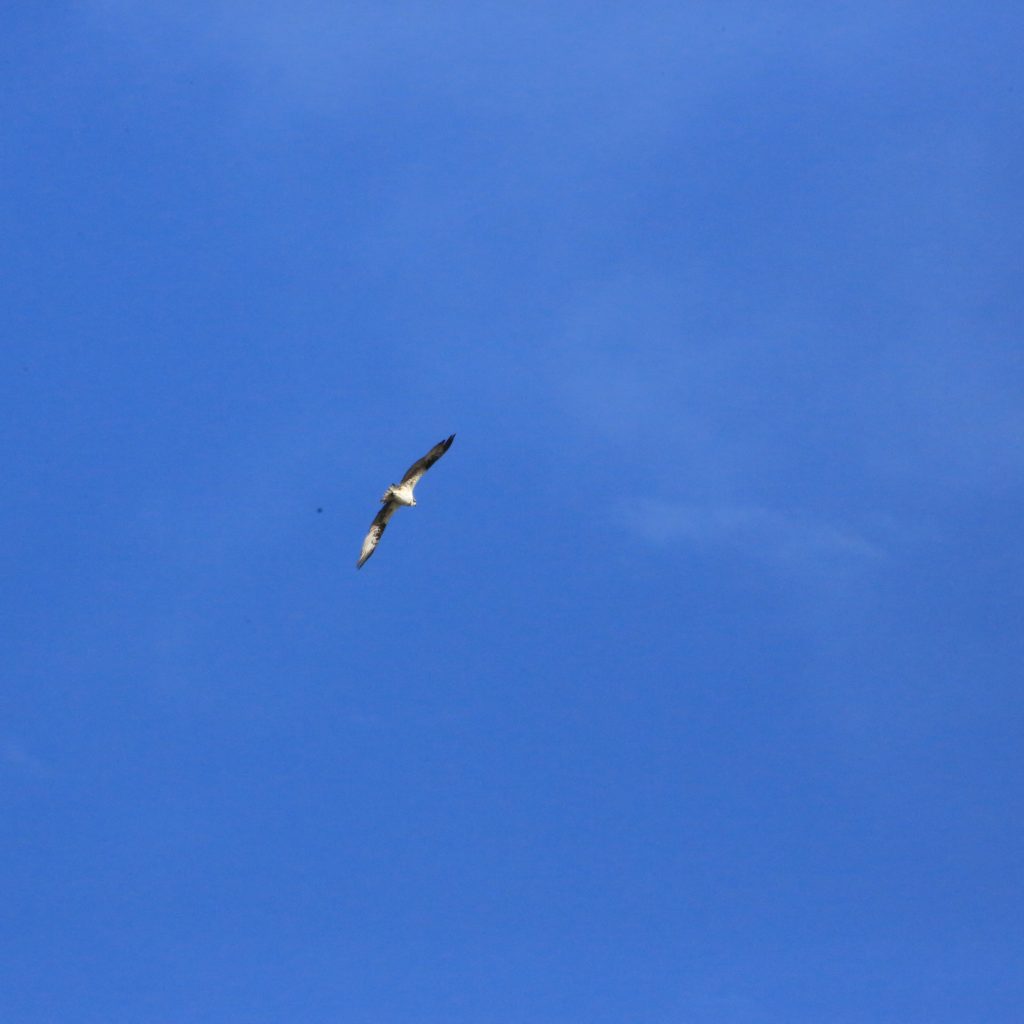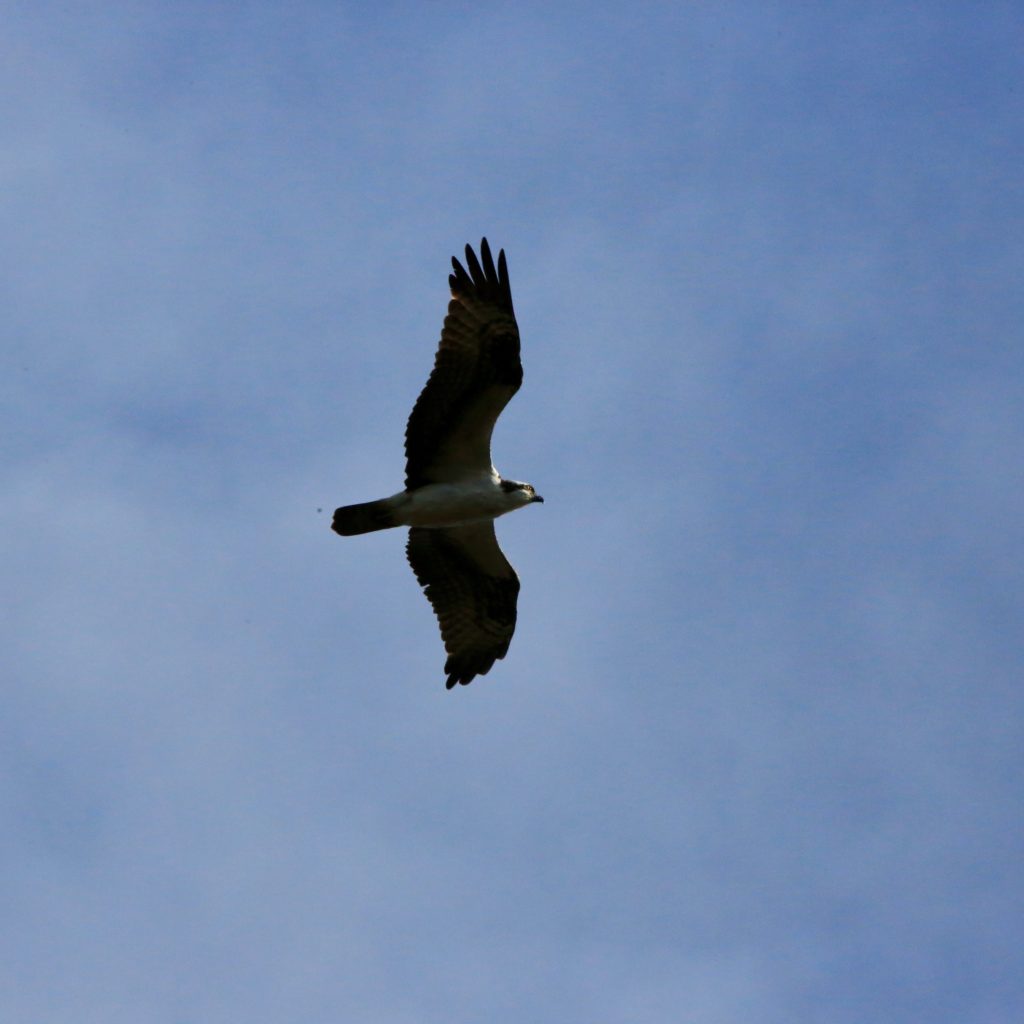
Osprey
An Osprey is a fun bird to see while bird watching. Below are some tips to help you identify Ospreys. We have also put together a list of fun Osprey t-shirts, Osprey bird patches, bird houses, bird feeders, binoculars, stickers and other fun bird watching items.
About Osprey
Ospreys have a reversed outer toe that allows them to grasp prey and perch firmly on branches. They are incredible divers catching fish in a 1 out of 4 dives. Ospreys build their nests on a man-made structure. Oldest Osprey known was 25 years 2 months old being banded in 1973.
Osprey Color Pattern
Their upper body parts are a deep brown with white breasts with casual brown streaks. Their underparts are purely white. Osprey heads are white with black masks reaching to the sides of their necks. Their bill is black with a blue wax, their large bodies are accompanied with white feet and black talons. The male and female appear similar, but the adult male is slightly slimmer with narrower legs.
Description and Identification
Ospreys have brown and white bodies and whiteheads with black streaks across the eyes. Their irises range from golden to brown hues with pale blue membranes around them. The beak is a black shade with a blue cere while the feet are white with black talons. The wings are long and tapered with four lengthy feathers and one shorter than the four. The males can be differentiated from the females because of their slimmer bodies and narrower wings. While it is harder to tell between the adult birds, it’s easier to distinguish younger ospreys. They have yellowish beige fringes on their upper bodies and a similar tone on their underbodies. The feathers on the head are streaked.
Osprey Size
Ospreys are large birds similarly shaped as hawks. Their flight is characterized by the M-shaped seen from below with the shape of their wings. Their general measurements are:
- Length 54 – 58 cm
- Weight 1400 – 2000g
- Wingspan 150 – 180 cm
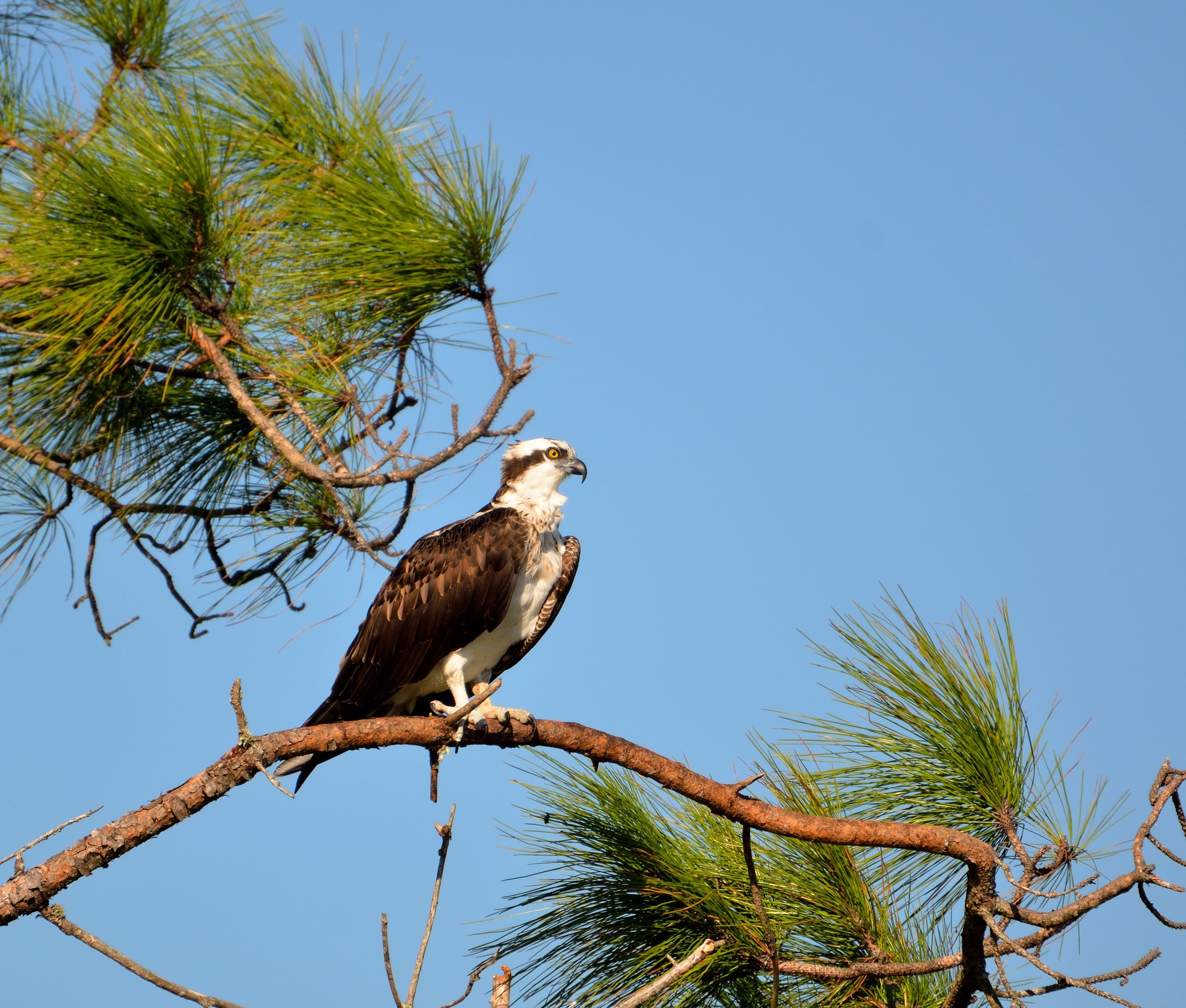
Osprey Behavior
Although their soaring and diving is their specialty they do not outmaneuver other hawks. They prefer open areas flying with stiff wing beats. During breeding season, the males showcase a sky dance with dangling legs holding on a fish or nesting material in its talons.
What Osprey Eat
Ospreys mainly feed on live fish, that weigh around one-third to two-thirds of a pound and are six to thirteen inches in length. They have a vision that lets them spot their underwater prey when in flight. They hover around the area for a while, eyes steadfast on the fish and then plunges into the water to grab it. Ninety-nine per cent of their diet comes from fish, while on occasion they can also be found preying on rabbits, hares, snakes, salamanders, squirrels and other smaller birds.
It exclusively feeds on fish measuring 6 – 13 inches in length and weighs 2.5 pounds. On rare occasions, they are seen feeding on fish and bird carcasses. They get most of their hydration from the flesh of the fish they consume and on hot days, adults are seen drinking directly from water sources.
Where Ospreys Live and Their Habitat
For nesting, the female Ospreys build their nests on dead trees, power poles and sometimes perched on chimneys and buoys. Though Ospreys can survive in both tropical and temperate climates, they choose their habitats according to their needs. Ospreys are primarily fish eaters and like to live in areas close to water bodies. They can be found near lakes, oceans, rivers, mangroves, lagoons and marshes. In winters, they migrate to unfrozen water bodies containing an abundance of food. Ospreys, interestingly, always choose the same wintering grounds as well as return to the same breeding grounds every year.
Three feet being their optimum diving height they tend to nest near shallow fishing areas, going to deep waters if the school of is near the surface. Their habitats spread across a variety of locations, from Alaska to Mexico but there must be an accessible supply of fish close by.
Range and Migration

Ospreys have been discovered in all continents except Antarctica. In North America, they can be spotted in Alaska and Florida, and also in most parts of South America and all the way to Argentina. In Europe, they are found breeding in Ireland, Scandinavia, Finland and Great Britain. Most of these birds can be spotted along the coastlines of Australia. The European birds migrate to Africa in the winters, while the North American and Canadian birds travel to Central or South America. Birds of the Australian breed do not leave their homes ever.
Nesting
Ospreys choose to breed close to freshwater lakes and rivers. They nest in open areas and atop high perched objects to protect the eggs from ground predators. The nests are usually built on treetops, cliffs or man-made platforms like poles and chimneys. The nesting spot is chosen by the male Ospreys before the females arrive. The nests are constructed of sticks and lined with grass, sod, bark, vines or algae. The males find the materials while the female Ospreys arrange it. In the initial seasons, the nests are relatively small in size, with diameter less than 2.5 feet and 3 to 6 inches deep. After years of adding new materials to the nest, they can grow up to 3 to 6 feet in diameter and 10 to 13 feet in depth.
Osprey Lifecycle
Male Ospreys fetch most of the materials to build nests breaking dead sticks as they pass over trees. They add onto the nests over the years, eventually ending up with nests big enough for a human to sit in. The females lay 1 -4 eggs incubating them for 36 to 42 days and the chicks nest for 50 – 55 days.
Ornithology
Bird Watching Academy & Camp Subscription Boxes
At Bird Watching Academy & Camp we help kids, youth, and adults get excited and involved in bird watching. We have several monthly subscription boxes that you can subscribe to. Our monthly subscription boxes help kids, youth, and adults learn about birds, bird watching, and bird conservation.
Bird Watching Binoculars for Identifying Ospreys
The most common types of bird watching binoculars for viewing Ospreys are 8×21 binoculars and 10×42 binoculars. Bird Watching Academy & Camp sells really nice 8×21 binoculars and 10×42 binoculars. You can view and purchase them here.
Osprey T-shirts
If you love the Osprey you should purchase a Bird Watching Academy & Camp T-shirt. To help support bird conservation we donate 10 percent to bird conservation activities.
Osprey Iron On Patches
Kids, Youth, and Adults love to collect our Bird Watching Academy & Camp iron on patches. Our bird watching patches help you keep track of the birds you have seen an identified. You can also display the patches on our Bird Watching Academy & Camp banners.
The Osprey is a great iron on patch to start your collection with. The patches are durable and can be sewn on or ironed on to just about anything.
Osprey Stickers
Stickers are a great way for you to display your love for bird watching and the Osprey. We sell a monthly subscription sticker pack. The sticker packs have 12 bird stickers. These sticker packs will help your kids learn new birds every month.
Bird Feeders For Osprey
There are many types of bird feeders. Here are our favorite bird feeders for your backyard. We use all of these bird feeders currently. Kids will have a great time watching birds eat at these bird feeders. Using this collection of bird feeders will provide a wide variety and many types of birds.
Best Bird Houses for Osprey
There are many types of bird houses. Building a bird house is always fun but can be frustrating. These 4 bird houses have become our favorites. Getting a bird house for kids to watch birds grow is always fun. We spent a little extra money on these bird houses but they have been worth the higher price and look great.


